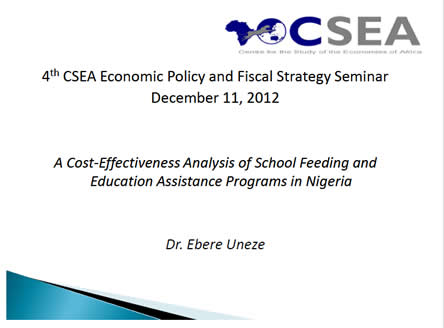Author:Dr. Ebere Uneze
Publication Date: December, 2012
Document Size:20pages
Key Message
Knowledge about the concept andapplication of cost-effectiveness analysiscan help policymakers make informedchoices about programs that can improvethe lives of the citizens
Introduction
- Increasing access to basic education is a priority for policymakers
- Low school enrollment is a big problem in Nigeria, especially inthe North, and stands in the way of the Education for All (EfA)program and educationMDG
- Enrollment can be increased using several interventions, but forthis analysis, we focus on: EA and HGSF&H

